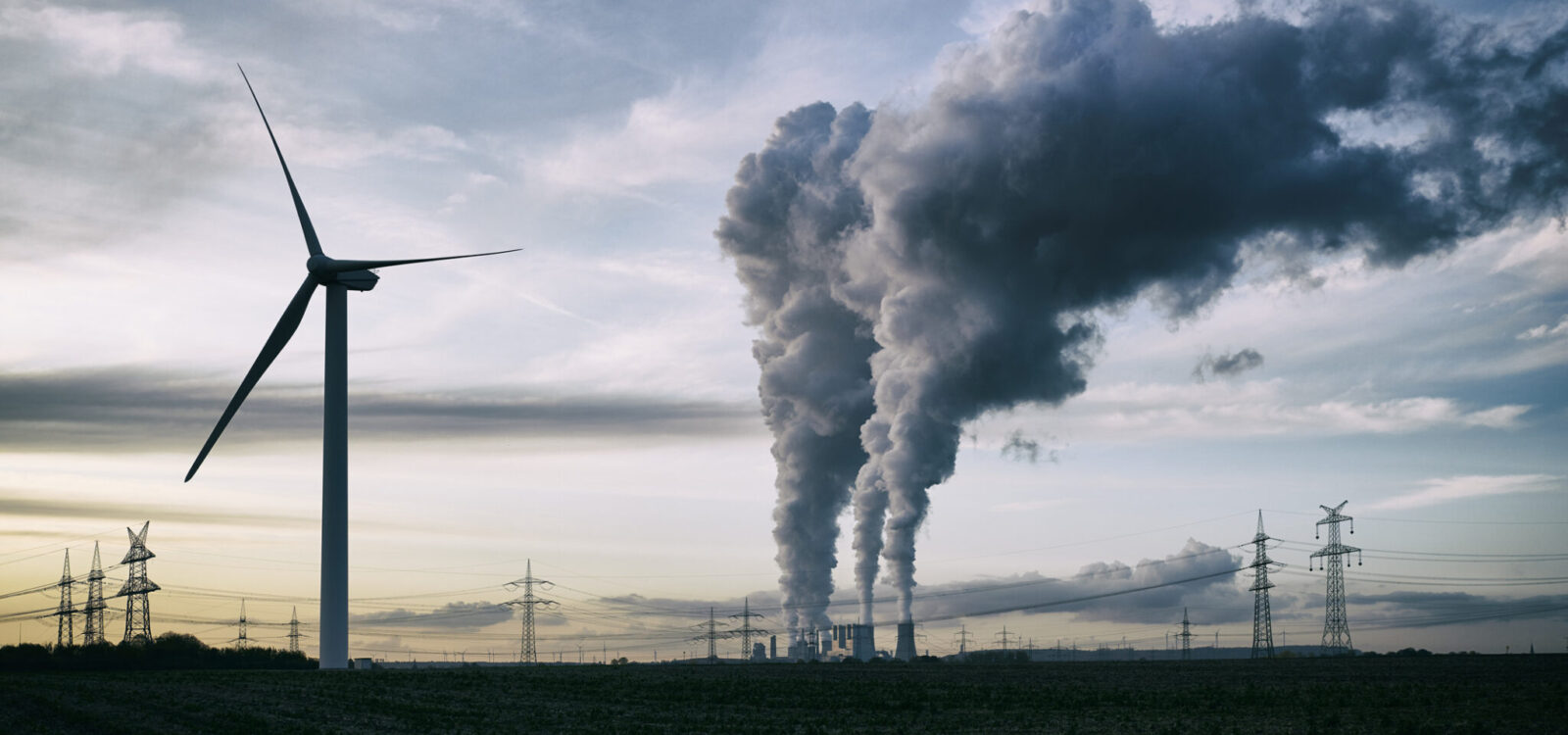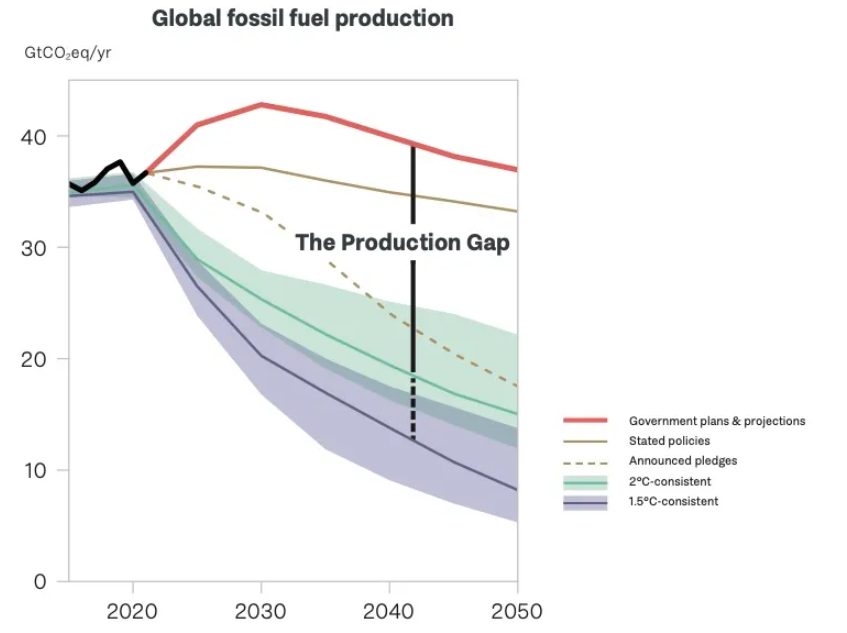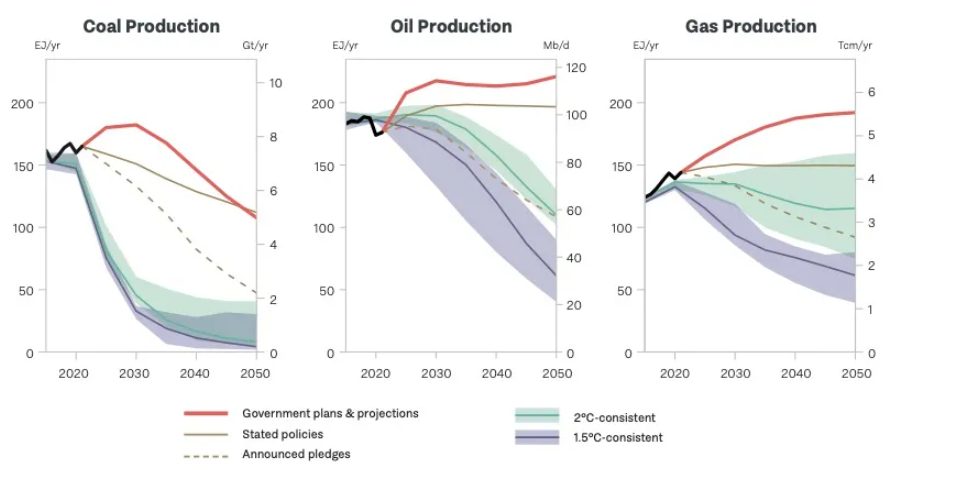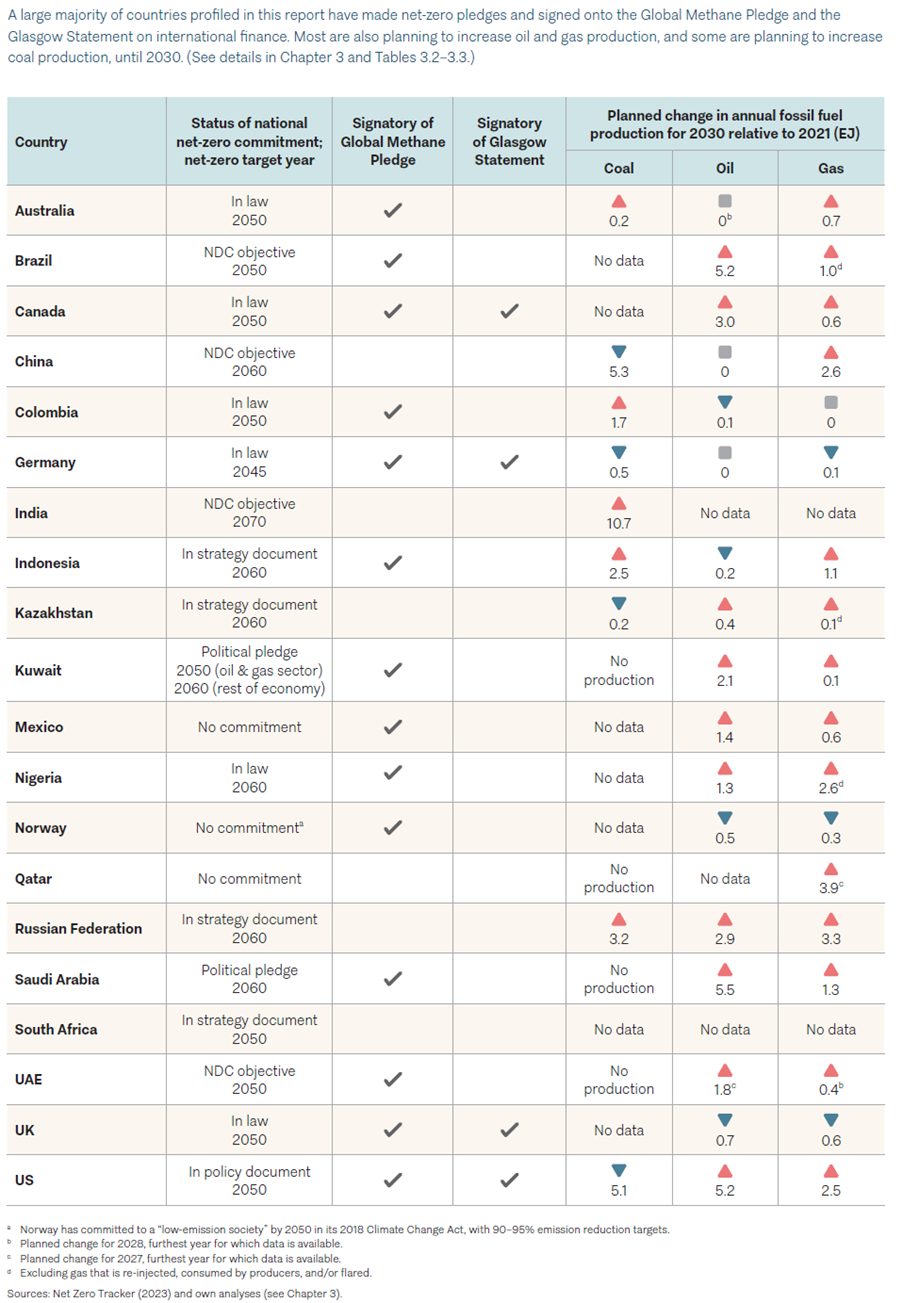
The Production Gap
A series of reports generated in association with the recent Conference of the Parties #28 (COP28) includes the Production Gap Report 2023[1]. This report initially published by the UN Environment Programee in 2019, tracks the disparity between governments planned fossil fuel production and the levels required to limit global warming to 1.5°C as outlined in the Paris Agreement temperature goal.
Climate change is accelerating
This report is important because there is growing evidence[2] that climate change is accelerating, and this is being largely driven by the burning of fossil fuels. Governments need to take action to limit global warming.
The report focuses on governments primarily because of their role in the production of coal and half the production of oil and gas. It also focuses on production (supply-side measures) as most mitigation goals are expressed in terms of reductions in emissions from consumption (demand-side measures).
Key findings:
Production gap
Governments plan to produce, in total, 110% more fossil fuels in 2030 than consistent with a warming target of 1.5oC and 69% more than consistent with a 2.0oC warming.
The production gap is expected to worsen by 2050 to 350% and 150% of the 1.5oC and 2.0oC targets, respectively.


Production gap increasing
Government plans and projections lead to an increase in coal production until 2030, and oil and gas production until at least 2050, increasing production gaps over time. These plans contradict government commitments under the Paris Agreement and undermine hopes for global demand to peak by 2030.
Emission pledges inconsistent with production
17 of 20 fossil fuel-producing countries (shown in Table 1 below) have pledged to achieve net-zero emissions and may have initiated processes to reduce emissions from fossil fuel production. But most continue to plan for increased fossil fuel production, with no commitment to reduce production in line with the 1.5oC warming target.
Many countries promote gas as a ‘transition’ fuel but do not specify a plan to transition away from gas. Also, the pollution benefit of moving away from coal is substantially reduced by the methane leakage along the gas supply chain.
Transparency
The report suggests that as major producers, governments need to be more transparent in plans, projections, and support for fossil fuel production, and how they align with national and international climate goals.
4 of the 20 fossil fuel-producing countries have signed the Glasgow Statement on International Public Support for the Clean Energy Transition to end international public funding for ‘unabated’ fossil fuel projects by the end of 2022, redirecting investments into clean energy. Production plans that are too high and must be pared back, which may generate stranded assets.
Reduction targets
Short-and-long-term reduction targets are needed for fossil fuel production, and these need to complement other climate mitigation activities.
Climate policy has tended to focus on demand and the territorial emissions generated by the associated combustion. Production and consumption need to be addressed in a coordinated way.
Some mitigation scenarios envisage some reliance on carbon capture and storage (CCS) and Carbon dioxide removal (CDR) methods. However, there are considerable uncertainties around the deployment of CCS and novel CDR technologies. CDR strategies also give rise to concerns about their effect on biodiversity, food security and the rights of indigenous people and other traditional land users.
Phase-out of fossil fuel production
Committed emissions of CO2 expected over the lifetime of existing fossil fuel-producing infrastructure already exceed the carbon budget for a 50% chance of meeting the 1.5oC target by 2100. This implies that no new coal mines or oil and gas fields can be developed unless associated with the retirement of existing infrastructure.
Countries should aim for a near-total phase-out of coal production by 2040 from 2020 levels, and a reduction of oil and gas production and usage of 75% by 2050.
Equitable transition
An equitable transition away from fossil fuel production must recognise responsibilities and capabilities. Countries with greater capacity to move away from fossil fuel reliance (e.g. having more capacity for renewable resources) should aim for more ambitious reductions and help countries with limited capacities.
Achieving net-zero CO2 emissions by 2050 needs governments to plan and make reductions in the production of all fossil fuels alongside other mitigation actions, starting immediately.
Table 1: Planned fossil fuel production by country

The next article in this series will discuss the Emissions Gap Report, which charts the gap between national pledges to reduce GHG emissions and what is required to keep global temperature increases to well below 2 oC by the end of the century.
References
[1] https://www.unep.org/resources/production-gap-report-2023; UN Environment Programme, authored by various groups (SEI, Climate Analytics, E3G, IISD, UNEP), 8 November 2023
[2] https://www.ipcc.ch/report/ar6/wg2/resources/spm-headline-statements/
CPD: Actuaries Institute Members can claim two CPD points for every hour of reading articles on Actuaries Digital.






